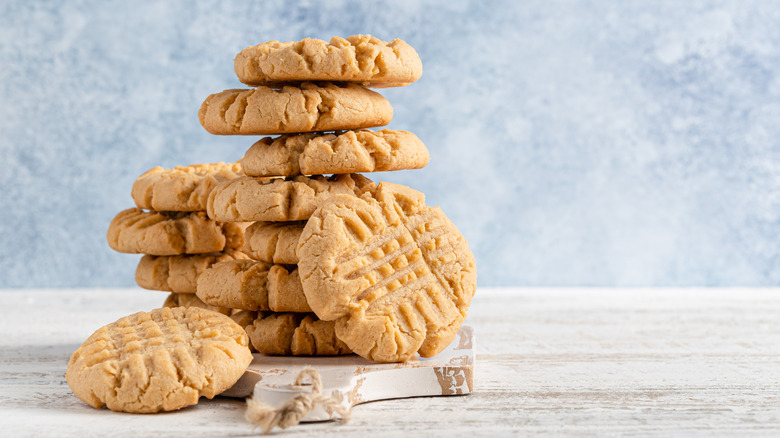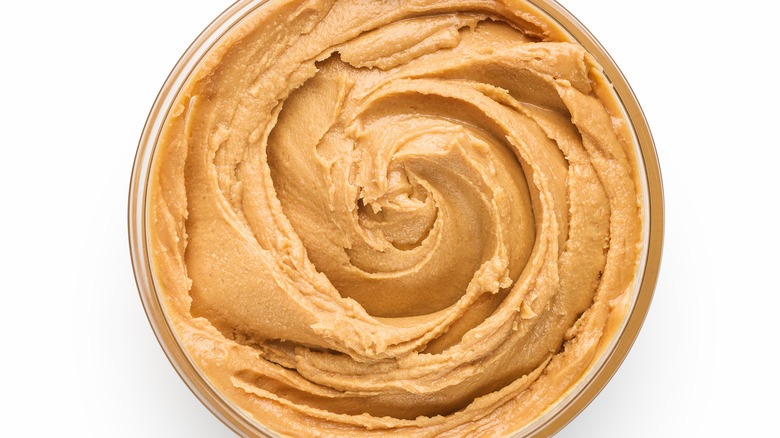Don't Forget This Crucial Step When Baking With Natural Peanut Butter
Peanut butter is the perfect addition to most baked goods. Its rich, fatty flavor and smooth consistency can add texture to everything from Buckeyes to the classic peanut butter cookie. As Reese's loves to constantly remind us, it is also a dreamy counterpart to the dark, more bitter flavors of chocolate.
SweeTooth Design reports that while peanut butter has existed in some form for ages, it was actually suggested as a shortening substitute in an article in Popular Science News in 1897. The idea was that it could be used to replace lard in most recipes.
Its role in food and baking especially was then cemented with the release of George Washington Carver's "How to Grow the Peanut: And 105 Ways of Preparing It for Human Consumption" in 1917, per the USDA. Among other recipes were those for peanut cookies and peanut brownies, according to the National Park Service.
One of the latest trends in peanut butter these days is 'natural' varieties. Simply Recipes says that these are peanut butters that are made with only peanuts, and occasionally salt. Many other recipes include ingredients like stabilizers and preservatives. While this more simple variety of peanut butter may taste just as good as its counterparts, it does take a little extra work when subbing in baked good recipes.
Natural peanut butter needs to be stirred
Anyone who's ever opened up a jar of natural peanut butter knows that the biggest difference between it and conventional peanut butter is the slick of oil that accumulates at the top of the jar. Simply Recipes explains that this is due to the stabilizers that are absent in natural peanut butters. It's perfectly normal for the fats in peanut butter to separate. Conventional peanut butter manufacturers use ingredients like hydrogenated vegetable oils to avoid this.
This separation does pose a small problem for bakers though. Using natural peanut butter requires a serious stir, Cook's Illustrated notes. Those oils and fats need to be completely reintegrated into the other solids before it can be used. Otherwise, parts of the peanut butter will be drier than others and it could affect the final texture of your cookies.
Simply Recipes says that an easy way to incorporate the oils without making a mess is to store the jar upside down. This should help things naturally resettle as long as you give it all a serious shake before opening. You can also use an immersion blender, or transfer it all into a food processor to completely blend things back together. Those oils should then stay mixed in for future use as long as your peanut butter is stored safely inside the refrigerator.

